Spreading the Message of Peace in Myanmar
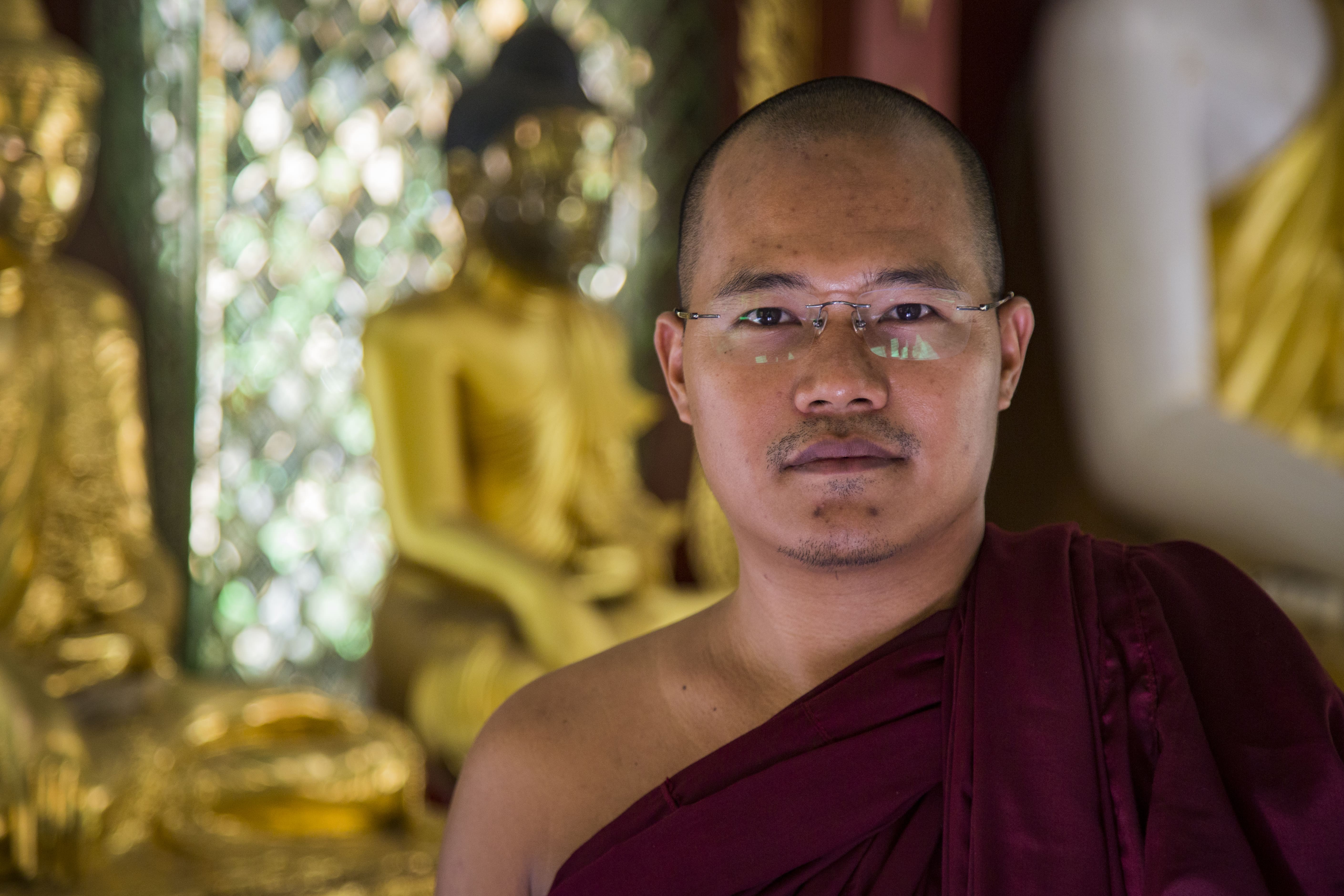
Nestled among Myanmar’s vibrant and diverse religious communities, Ashin Mandalarlankara grew up in a Theravada Buddhist bubble. That bubble burst in 2010 when an Irish Catholic nun came to his monastery in Mandalay to teach English.
“She invited me to her church, where I met Christian priests and sisters. We stayed in touch, and slowly I met Muslims and Hindus around town. I learned from her not only English but also about different cultures and religions and about promoting peace and harmony, all lessons I now teach my students,” he said.
Mandalarlankara’s decade-long journey from a secluded monastery on the banks of the Irrawaddy River to promoting interreligious dialogue across Myanmar and around the world has been motivated by an urgent need for peace in his country.
In recent years, religious and ethnic tensions have erupted into violence. The rapid spread of misinformation and hate speech online has only made clashes worse.
“The problem in Myanmar is that people are afraid to lose their identity. That leads to tension, conflict, anger, misunderstanding and discrimination among people who do not even understand the teachings of their own religions,” he said.

In 2015, in an effort to reduce these tensions and as part of his commitment to KAICIID’s International Fellows Programme, Mandalarlankara recruited more than 25 young adults from greater Mandalay’s Buddhist, Christian, Hindu and Muslim communities to take part in ten weekend sessions of interreligious training, intercultural dialogue and sacred site visits to local mosques, temples and churches.
Convincing a group of 20-somethings to give up their Saturday mornings and brave the summer’s heavy rains on their motorbikes to meet wasn’t easy, but Mandalarlankara persevered, reaching out to other religious leaders in Mandalay to help recruit receptive youth from their respective faith communities. His efforts paid off.
“Some students didn’t know anything about the other religions before the trainings. They were suspicious and had doubts. Now they are friends and host gatherings of their own in tea houses and coffee shops. They want to better understand each other’s religions and want to keep learning about each other’s traditions and cultures,” he said.
Mandalarlankara has continued this momentum in recent years by leading more than a dozen interreligious dialogue trainings and activities for novice monks at his monastery and in partnership with the Center for Diversity and National Harmony, the Catholic Agency for Overseas Development, and Paungsie Metta Initiatives (PMI).
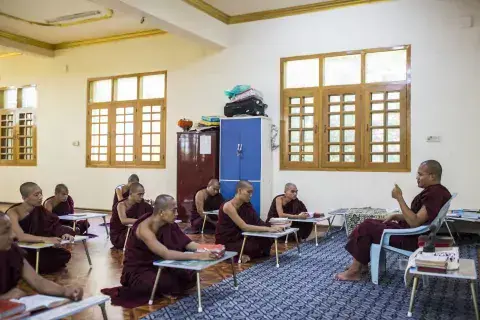
KAICIID helped establish the PMI in 2016 as a multi-religious network of prominent Buddhist, Christian, Hindu and Muslim faith leaders and civil society organisations to promote peaceful dialogue across Myanmar. Through interfaith forums, inclusive dialogue events, and peace celebrations, PMI and its partners have worked with hundreds of people to promote interreligious harmony and build bridges among religious, ethnic, political and regional communities.
Mandalarlankara also leads intrareligious dialogue sessions for Buddhist monks and nuns around the country.
“In Myanmar, we have so many ethnic groups with different cultures, values, languages, and beliefs. Living under military rule, we didn’t have a chance to study and understand these differences. There was always tension and misunderstanding. By learning about ourselves and each other through inter- and intrareligious dialogue, by sharing our differences and similarities, we can find ways to live peacefully and harmoniously,” he said.
Mandalarlankara largely credits KAICIID with giving him the knowledge, skills, and confidence to design and deliver these much-needed dialogue activities, primarily to youth.
Targeting this “Facebook generation” has the added benefit of allowing Mandalarlankara to address hate speech on social media. In addition to interreligious and intercultural dialogue trainings, his work teaches young people how best to combat misinformation and discrimination they encounter online.

“People spreading hate speech don’t understand interreligious harmony, and too many youth are using social networks to make conflict. If we write abusive comments on Facebook, other people will do the same. We cannot extinguish fire with fire. We have to take care of hate speech and not use Facebook as a tool to hate other people.”
As part of these efforts, Mandalarlankara brings young adults from different faiths and ethnicities together to discuss their customs, traditions, diets and clothes. These conversations help to reframe outward differences that sometimes draw ridicule in a more positive and empowering light.
“People ask me why I wear robes, why Muslims eat Halal, why Buddhists eat vegetarian, why Jews eat Kosher. It’s easy to criticise other people and for tensions to build when we don’t understand what we see. That’s why it’s so important to share and discuss our differences.”
Sporting his saffron robe, Mandalarlankara has sparked such discussions in Italy (where he studied interreligious and intercultural dialogue at the Pontifical University of Saint Thomas Aquinas), Sri Lanka (where he completed a master’s degree in Pali and Buddhist Studies), the U.S. (where he studied religious pluralism with the State Department’s Bureau of Educational and Cultural Affairs), Germany (where he attended the World Assembly of Religions for Peace), Morocco, and Australia (where he attended A Common Word Among the Youth’s International Fora).
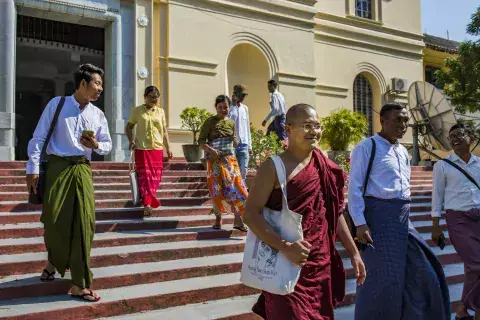
Mandalarlankara is now studying international relations at the University of Mandalay and plans to study political science in order to better understand his country’s unique relationship with Buddhism and democracy. At the same time he continues working towards harmony in Myanmar by addressing communal wounds of the past using the interreligious dialogue skills he learned as a KAICIID Fellow.
“To achieve conflict transformation, we need trauma healing,” he said. “When people don’t understand other religions, this is very hard to achieve. Trauma healing needs to be part of the interreligious dialogue process, just as we need interreligious dialogue to end conflicts.”
He thanks KAICIID for inspiring him to collaborate with other faith leaders and promote intercultural and interreligious understanding.
“We have to make peace in our home, but we also have to be peace messengers,” Mandalarlankara said. “In order to understand and accept each other, in order to achieve peace and harmony, we have to communicate with people of different religious backgrounds. KAICIID has made that happen.”
Ashin Mandalarlankara is one of KAICIID's featured Heroes of Dialogue. To find out more, click here
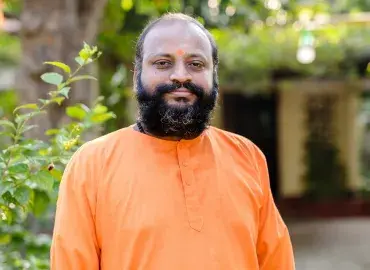
Having spent his early childhood idolising Albert Einstein before going on to study metaphysics, chemical…

For this year’s International Youth Day on August 12th, we caught up with…
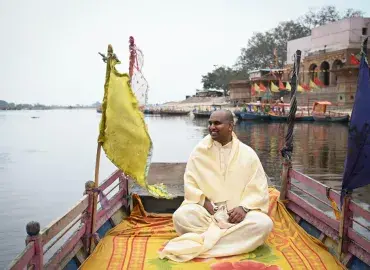
Yudhistir Govinda Das represents the Gaudiya Vaishnava tradition, whose core beliefs are based on sacred Hindu texts. From…
